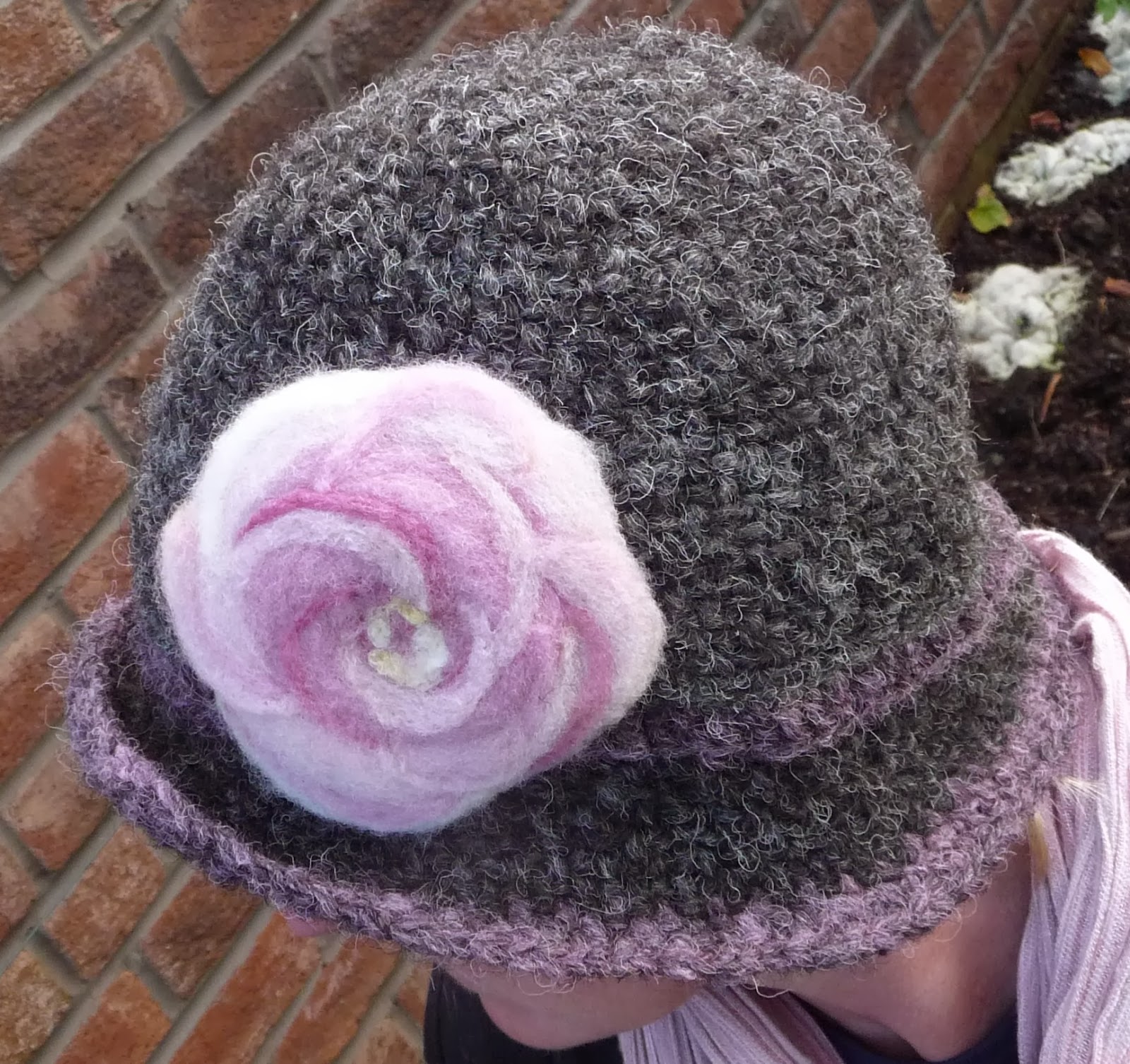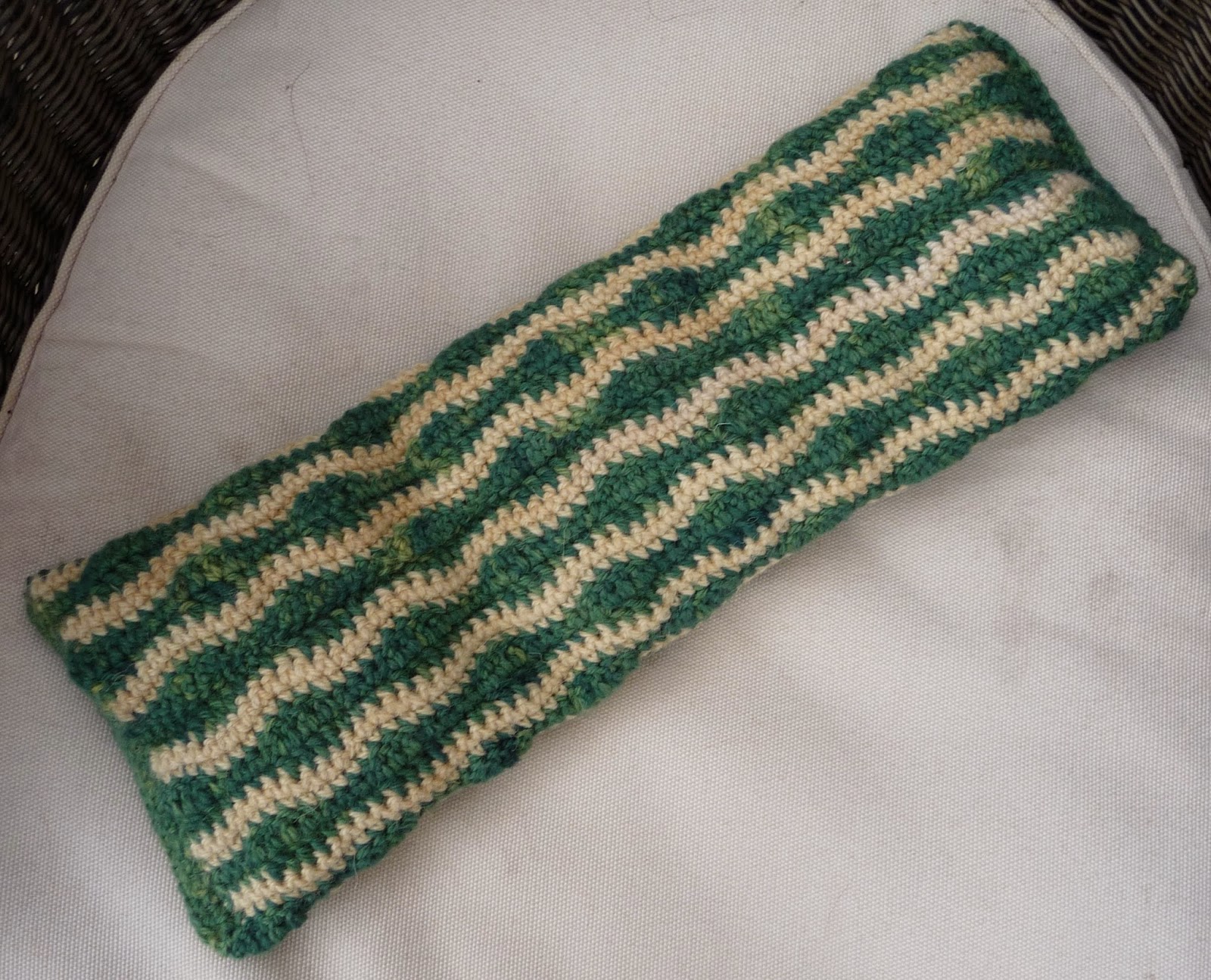
 'Socks for Christmas' sounds more like a threat than a promise. Hand knitted pairs spread the love better than a multipack of sports socks, but even so .... they look misshapen. This is not because the knitter was at home to Mrs Cock Up. Custom made woolen socks fit in a way that elasticated tubes simply don't.
'Socks for Christmas' sounds more like a threat than a promise. Hand knitted pairs spread the love better than a multipack of sports socks, but even so .... they look misshapen. This is not because the knitter was at home to Mrs Cock Up. Custom made woolen socks fit in a way that elasticated tubes simply don't.I made a right performance of knitting gloves and long ago gave up trying to manage anything suitable for the human hand. In magazines, sock patterns with fabulous cables and lacework have me sighing and turning the page. For me, turning the heel, shaping gussets for the instep and grafting the toes guaranteed I'd get stuck and end up stuffing the ufo to the bottom of the stash, a thorn in my side forever.
 Then I came across this phototutorial by Sally in Wales on Downsizer. The title 'Socks Demystified' was most encouraging. Unlike so many others, the pattern is for aran or chunky wool. Thanks to the photos and explanation, at last, I understood the grand scheme of sock anatomy. I managed to complete a pair of socks for my husband, using Suffolk Fleece dyed with yarrow. He wears them often. Substantial and successful. Notice the special stitch for the heels to take hard wear in boots Most satisfying.
Then I came across this phototutorial by Sally in Wales on Downsizer. The title 'Socks Demystified' was most encouraging. Unlike so many others, the pattern is for aran or chunky wool. Thanks to the photos and explanation, at last, I understood the grand scheme of sock anatomy. I managed to complete a pair of socks for my husband, using Suffolk Fleece dyed with yarrow. He wears them often. Substantial and successful. Notice the special stitch for the heels to take hard wear in boots Most satisfying. Steve's socks impressed my sister, who suggested I make a really thick pair for her partner, who will wander round the house in stockinged feet. Welsh Mountain fleece is durable stuff, should take a battering. I had some left after making a jumper, so I dyed part of it with coreopsis plants. These are annuals and had flowered til November, but were on their last legs. I read that the whole plant gives dye, not just the flowers. It seemed a shame not to wring every last drop out of them when clearing the border. While the colour is not the rich orange of summer flowers, this golden bronze from stems and leaves was not half bad. Fun to spin chunky and a really quick result, as I reduced to 30 stitches cast on. Wrapped up with the latest Uhtred book from Bernard Cornwell, that was one Christmas present sorted.
Steve's socks impressed my sister, who suggested I make a really thick pair for her partner, who will wander round the house in stockinged feet. Welsh Mountain fleece is durable stuff, should take a battering. I had some left after making a jumper, so I dyed part of it with coreopsis plants. These are annuals and had flowered til November, but were on their last legs. I read that the whole plant gives dye, not just the flowers. It seemed a shame not to wring every last drop out of them when clearing the border. While the colour is not the rich orange of summer flowers, this golden bronze from stems and leaves was not half bad. Fun to spin chunky and a really quick result, as I reduced to 30 stitches cast on. Wrapped up with the latest Uhtred book from Bernard Cornwell, that was one Christmas present sorted. My latest sock offering has taken forever to complete. Serious knitting in the run up to Christmas. Steve has had to volunteer for the risky 'sock of death' manoeuvre - still not long enough? No, it is not a trick of the light, the socks are slightly different colours. One is made of wool dyed with bracken tops picked later in the summer than the other. Happily, my youngest brother habitually wears odd socks and would actually feel uneasy in an identical pair. I am pleased that neither skein has faded after six months or so in the wool basket. Making a very concentrated bath has given better dye fastness than I got last year. The green is bracken overdyed with woad.
My latest sock offering has taken forever to complete. Serious knitting in the run up to Christmas. Steve has had to volunteer for the risky 'sock of death' manoeuvre - still not long enough? No, it is not a trick of the light, the socks are slightly different colours. One is made of wool dyed with bracken tops picked later in the summer than the other. Happily, my youngest brother habitually wears odd socks and would actually feel uneasy in an identical pair. I am pleased that neither skein has faded after six months or so in the wool basket. Making a very concentrated bath has given better dye fastness than I got last year. The green is bracken overdyed with woad.Socks for Christmas. Perhaps I should have put a satsuma and chocolate coins down the toe end.















































